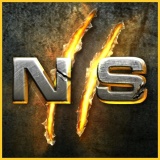Introduction
Despite the fact that I have spent the majority of my life living by the sea, I must admit that I only have a limited amount of sailing experience due to an unrelenting fear of sea-sickness, which dates back to my childhood after a rather rough SeaCat crossing back home to England after visiting relatives in France.
However, I must confess that I have now managed to get over my fear after a few buddies of mine duped me into going out on the water in my home city of Brighton last summer. Despite my initial feelings of anxiety and apprehension, I soon got into the swing of things and must admit that I had a great time; I also recently discovered that sailing has numerous health benefits and has made up for the fact that I seem to have had a little trouble making it to the gym.
I must admit that my knowledge of the sport was initially extremely low and my friends still tease me after I mistook their conversation about chandlery for being about the character from Friends. However, being a self-confessed tech-geek, I have been majorly intrigued about just how advanced marine electronics have actually become.
This should not have been such a surprise to me though due to the fact that technology at the forefront of our daily lives and its role will continue to evolve and become even more intertwined with our lives.
The Elimination of Human Error
As you would expect, the digital-age is now beginning to have a major impact on the sailing industry and there has been a major shifts towards ensuring that e-navigation finally becomes a reality and the prospect of changing the landscape and nature of the whole industry. The launch of the NAVTO NavStation combines the software of a 46” GigaPad touch device, providing navigators with an intuitive and user-friendly interface to effectively plan vessel routes.
Previously any marine traffic was required to communicate marine authority through via a traditional a fixed or handheld VHF such as the new Icom-M25, which one of friends seems to talk about endlessly. A VHF was utilised in order to verbally communicate route information before, during and after sailing.
However, the new technology will effectively enable the vessel and those on land to become one, allowing information to automatically pass between the two; this will essentially ensure that any potential possibility of miscommunication is eliminated. While there is always the possibility of errors as far technology is concerned, this is certainly a huge step in the direction of eliminating human-error, which is the current leading reason for the majority of maritime accidents.
The Future of Marine Technology
There has been increased speculation that tablets will eventually become an essential piece of marine equipment; I was initially quite surprised about this and thought that it could be a hoax but I was surprised to see that there are now numerous waterproof iPad cases available on the market.
Of course, this is certainly not considered to be the most innovative aspect in the advancement of technology, but it is expected that that we will see further developments with regards to the previously mentioned NAVTO NavStation and the complete integration of vessels and those land.
I am a young tech-obsessed Brit living in the UK (Brighton), interested in sport, travel, gadgets & software


















































































































































































